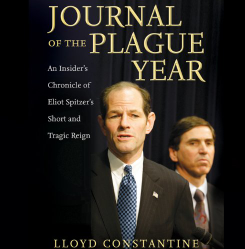“Let’s start at the very beginning – a very good place to start”[1] and for this newsletter that means HL 1 on November 15, 2016, where we reported that Sidney Poitier was a motivator and influencer for the entire Hopelessly Liberal endeavor. We said:
“By 1992 ‘liberal’ had already become a term of derision for many on the right and far left. Wimpy liberals abandoned it. But that same year I heard Sidney Poitier thank Hollywood Director Stanley Kramer for his lifelong efforts as an old-fashioned liberal, acknowledging the worth of people like Kramer, who eschewed the radicalism of the left and right but tenaciously and often hopelessly, pursued pluralism, egalitarianism and the perfection of America through peaceful means sanctioned and protected by our constitution.”

Stanley Kramer & Sidney Poitier
And when it came to the egalitarian element of the liberal agenda and its racial component, Sidney Poitier was not merely the “vehicle baby”[2] but for a time seemingly the entire fleet.
That time was the crucial 1960s civil rights era, the crucible for the liberalism of most Boomers like us. In a 1958 prelude to that era, Poitier starred in the movie “The Defiant Ones,” where his strong left wrist was chained to Tony (Bernard Schwartz’) Curtis’ right one, as you can see here and in HL 73. The movie was one of several Stanley (born “Abramson” in Hell’s Kitchen) Kramer’s racial equality lectures. The ubiquitous image of the two beautiful actors born in poverty, self-educated and made, and shackled to each other was for us a vivid reminder of the historic Black/Jewish civil rights alliance that had not yet begun to seriously fray, at least not publicly.
 Five years later while the Freedom Riders rode, Schwerner, Chaney and Goodman were murdered, the major civil rights laws were enacted and Mississippi and many central cities burned, Poitier was cast in a quartet of movies that changed America. “Lilies of the Field” in 1963 and “In the Heat of the Night,” “To Sir With Love” and “Guess Who’s Coming To Dinner” that all were released in 1967, two during and one the Christmas after “The Summer of Love.”
Five years later while the Freedom Riders rode, Schwerner, Chaney and Goodman were murdered, the major civil rights laws were enacted and Mississippi and many central cities burned, Poitier was cast in a quartet of movies that changed America. “Lilies of the Field” in 1963 and “In the Heat of the Night,” “To Sir With Love” and “Guess Who’s Coming To Dinner” that all were released in 1967, two during and one the Christmas after “The Summer of Love.”
It was no accident that in all four movies all the white women wanted Poitier and that he politely disappointed all of them – Lee Grant in “In the Heat of the Night,” Judy Geeson, Suzy Kendall and Lulu in “To Sir With Love,” his movie fiancé in “Guess Who’s Coming To Dinner” and maybe even the nuns in “Lilies Of The Field” though he did build them a chapel. We paid to see that last one five times during the summer of ’64 in Hempstead, New York, that recently had acquired a special piece of an adjacent municipality – the then racist and anti-Semitic Garden City – that had sold a piece of its village beautiful to Hempstead after a black family moved in.

Sidney Poitier & Rod Steiger
The least artistically accomplished of those four movies was “Guess Who’s Coming to Dinner,” another Kramer race lesson. Not a great flick, but the most important of the four. When beautiful young Kathleen Houghton told her movie parents, played by Spencer Tracy and Katherine Hepburn (Houghton’s real aunt) that she wanted to sleep with Poitier, but he was making her wait – the scene had been filmed just weeks before SCOTUS decided Loving v. Virginia, declaring the anti-miscegenation laws of 17 states unconstitutional.
Those elder versions of Tracy and Hepburn in the movie were Mr. and Mrs. (not Ms.) White America in a manner and to a degree unimaginable today. Even though and maybe because it was widely known that Tracy (soon to die) and Hepburn had been conducting a decades long extramarital love affair.
 The movie was a Time Magazine cover story and also the lead story in hundreds of other periodicals and newspapers. In the movie, Poitier gently lectures Tracy/Hepburn about race and his own movie parents harshly, but his real students comprised the whole country. After that the unofficial but clear consensus was that Sidney Poitier from Cat Island, Bahamas (though accidentally born in Miami) was The Man.
The movie was a Time Magazine cover story and also the lead story in hundreds of other periodicals and newspapers. In the movie, Poitier gently lectures Tracy/Hepburn about race and his own movie parents harshly, but his real students comprised the whole country. After that the unofficial but clear consensus was that Sidney Poitier from Cat Island, Bahamas (though accidentally born in Miami) was The Man.
The man and men Poitier portrayed, the lessons he and they taught were interpreted and applied by each in their own manner. A few weeks after the Christmas 1967 release of “Guess Who’s Coming To Dinner” we decided to take a break from our elite eastern college and headed to Howard University for the tragic Spring 1968 semester, that included MLK’s assassination and ended with RFK’s.
[1] The lyrics of Richard Rodgers, another hopeless liberal.
[2] “Vehicle” by The Ides of March.



0 Comments